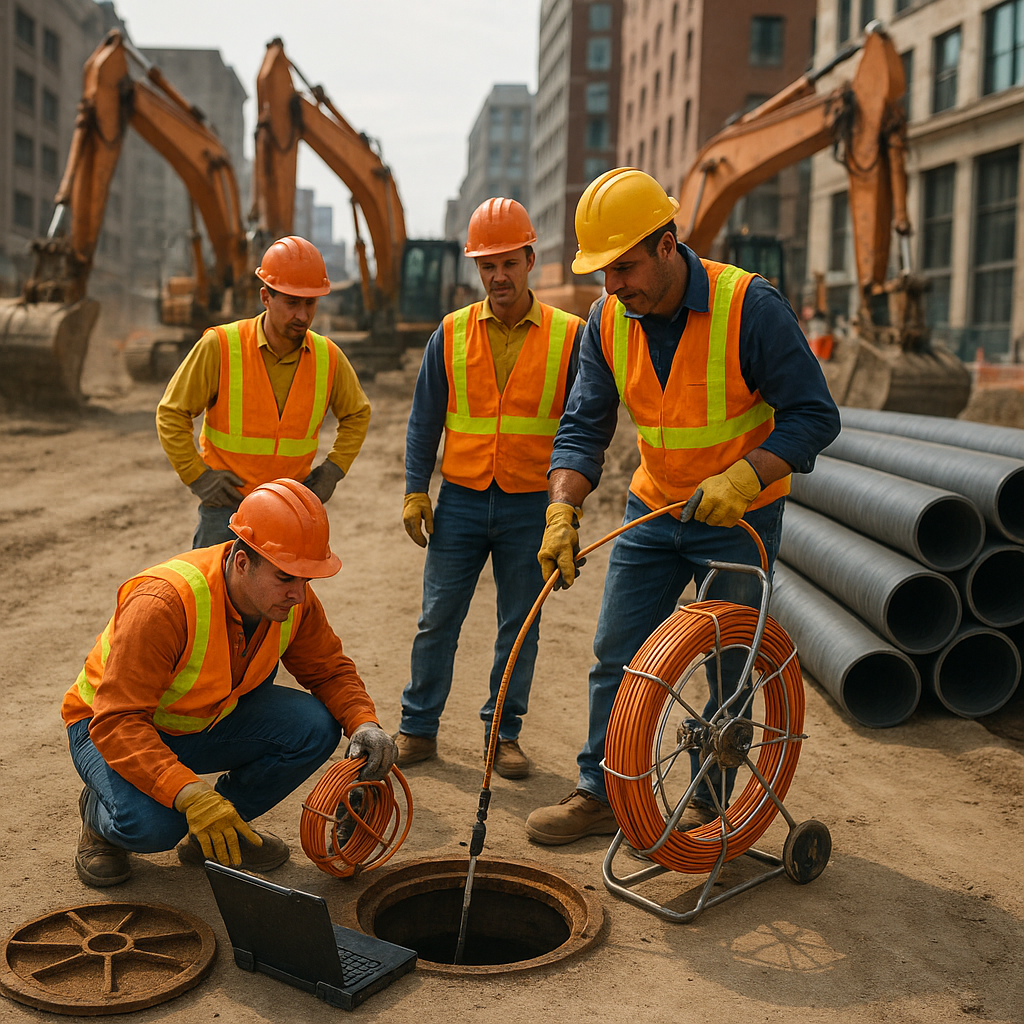success-stories
Top Sewer Inspection Best Practices for 2024
Discover cutting-edge sewer inspection techniques, technologies, and practices for optimal performance and compliance in 2024.
SewerInspection.org Team
10/16/2025
3 min read
0 views

Introduction
The sewer inspection industry is in the midst of a technological revolution. With advancements in AI, high-resolution imaging, and robotic systems, inspections are becoming more efficient, accurate, and safer. This article explores the best practices in sewer inspection, integrating the latest technologies and complying with industry regulations.
New Technologies and Equipment
AI and Machine Learning Integration
- Automatic Defect Detection: AI-powered cameras can detect pipe defects in real-time, reducing human error and allowing for predictive maintenance.
- Predictive Analysis: Algorithms analyze video feeds, identifying potential issues like cracks, corrosion, and root intrusion.
High-Resolution Imaging
- 4K and Ultra-HD Cameras: These provide clearer visuals for detecting fine cracks and leaks.
- Pan-and-Tilt Cameras: Offer comprehensive views of pipe interiors, crucial for complex inspections.
Robotic and Wireless Systems
- Lightweight and Wireless: Easy to use in tight or remote spaces, these systems enhance accessibility.
- Advanced Robotic Crawlers: Equipped with 3D mapping and GPS for precise location tracking, improving maneuverability.
Smart Plumbing Systems
- Sensors and IoT Devices: Monitor water usage, detect leaks, and enable remote adjustments, promoting water conservation.
Industry Regulations and Standards
Environmental and Regulatory Pressure
- Regular Inspections: Stricter regulations require periodic inspections to prevent leaks and contamination.
- Sustainability Focus: Emphasis on eco-friendly practices, including water-efficient fixtures and reduced carbon footprints.
Data Reporting and Compliance
- Automated Reporting: Inspection systems now offer software for automated reporting, aiding in regulatory compliance.
Market Trends and Business Opportunities
Market Growth
- Global Sewer Camera Market: Expected to grow at a CAGR of 5.7% from 2025 to 2032.
Mergers and Acquisitions
- Industry Consolidation: Larger firms acquiring specialized tech companies to expand capabilities.
Service Diversification
- Comprehensive Packages: Growing demand for inspection, maintenance, and data analytics services.
Residential Trends
- Smart Plumbing Adoption: Increasing use of smart systems in homes, opening new market opportunities.
Safety Protocols and Best Practices
Remote Inspection
- Reduced Exposure: Robotic systems reduce the need for workers in hazardous environments.
Automated Defect Detection
- Minimized Human Error: AI reduces reliance on manual inspection, enhancing safety.
Training and Certification
- Ongoing Education: Essential for operators to stay updated with new technologies.
Environmental Safety
- Sustainable Practices: Robotic inspections are less intrusive, aligning with environmental goals.
Recent Case Studies and Success Stories
Product Launches
- Innovations: RIDGID's SeeSnake microDRAIN APX and CUES's OZ4-HD camera highlight advancements in range and image quality.
Municipal Adoption
- Proactive Maintenance: Cities using AI-enabled systems reduce emergency repairs and costs.
Residential Smart Plumbing
- Water Conservation: Early adopters report significant reductions in water waste.
Cost and Pricing Information
Technology-Driven Price Differentiation
- Basic vs. Advanced Systems: Basic cameras are cost-effective for small jobs; advanced systems offer long-term savings.
Market Size
- Valuation: The sewer camera market was valued at $389 million in 2024, with steady growth projected.
Return on Investment
- Long-Term Savings: High-end systems, while costly upfront, save on labor and infrastructure damage.
Residential Upgrades
- Cost-Effectiveness: Smart systems lead to lower utility bills and potential insurance savings.
Conclusion
The sewer inspection industry is poised for significant growth, driven by technological advancements and regulatory demands. By adopting these best practices, businesses can improve efficiency, safety, and compliance, ensuring long-term success in a competitive market.
Tags
sewer inspectionplumbing technologyconstruction industry